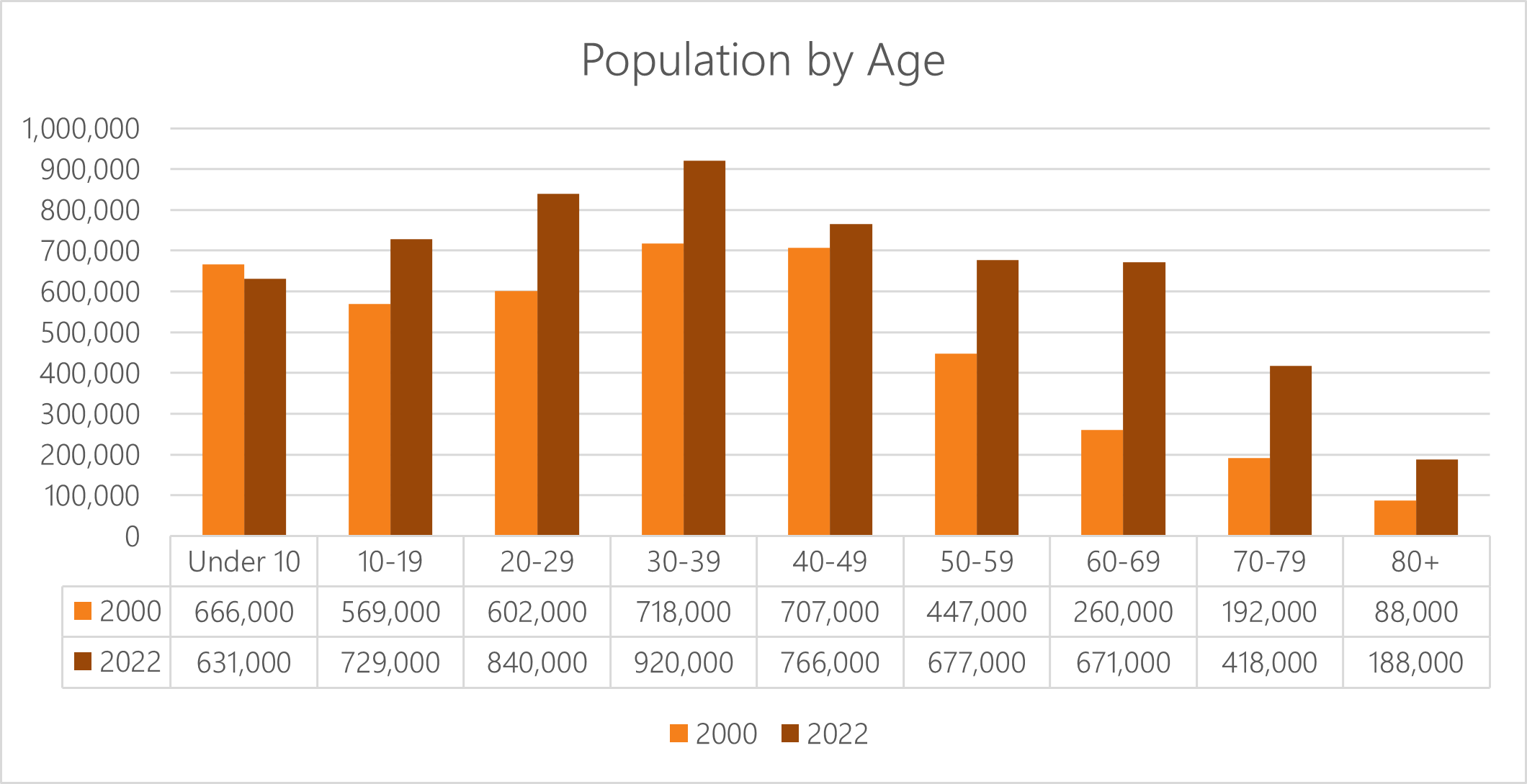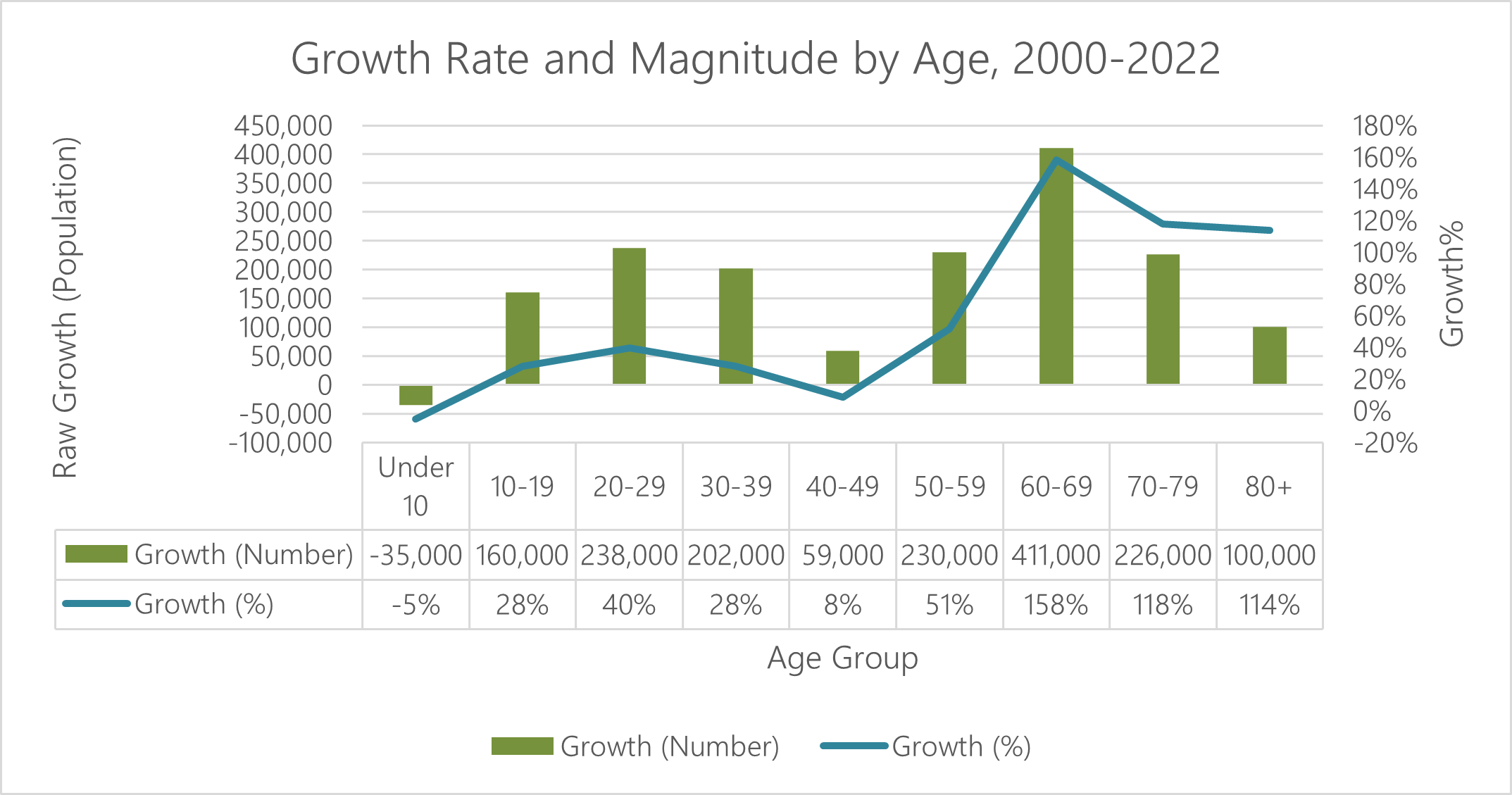25 Years of Change – Population and Age
11/6/24 / Corona Insights

As Corona Insights arrives at our 25-year anniversary, we’re looking back to see how our home state has changed over that time*. Included in this series are the following topics:
- Population and Age (this article)
- Citizenship Trends
- Sensory Disabilities
- Physical Disabilities
- Cognitive Disabilities
- Personal Care Disabilities
*Due to data availability the actual period examined in these posts is 2000 through 2022.

Colorado has a Rapidly Growing Population
Colorado is a popular state. Our state’s population has boomed over the past quarter decade, rising from 4.2 million in 2000 to 5.8 million in 2022. This translates to an annual growth rate of 1.5 percent per year, nearly double the U.S. national rate of 0.8 percent per year. Higher growth is typically attributable to migration into the state from other areas.
The Population is Also Growing Older
We hear a lot about the aging of the population, and that’s certainly true in Colorado. The number of people in their 60s has more than doubled over the past 22 years as the tail end of the baby boom enters that age category. This is the fastest growing age segment of Colorado’s population, rising 158 percent with a net increase of more than 400,000 people between 2000 and 2022. Older senior cohorts have also grown quickly, with the population of people in their 70s and 80s also growing by more than 100 percent during this period.
What is a bit lost in that narrative, however, is that the senior age group is far from the only age group seeing significant growth. Every age cohort has grown, with the exception of the youngest age group of children (under 10 years old). This population decline in younger children will be the focus of a future 25-year blog post. And indeed, even with the higher rate of growth among seniors, the 60s age group remains only the fifth-largest population segment. People in their 30s are the most common, representing over 900,000 Coloradans.

.

Our Conclusions
It is no surprise to anybody that Colorado’s population has grown rapidly over the past quarter-century. While we all know the pressures of growth on issues such as housing and cost of living and job markets, growth also brings numerous positive benefits to those who can thrive in the energy of this state. Population growth often runs hand in hand with economic growth, which increases employment opportunities, and affords wealth-building opportunities to those who can enter thriving job markets and housing markets.
The other key story is the growth of the senior population. Like many other parts of the U.S. and the world, older adults are becoming a larger proportion of society and voting populations, which means that issues associated with aging are increasingly important in the state.
The Fine Print
As discussed in our post about changes in demographic analysis here, demographic data in the early years of Corona Insights was generally limited to the decennial census, which was conducted in the year 2000. Due to the detailed analysis in many of these posts, we are using analyses of raw data files that were produced from the 2000 Census data. Given that the U.S. Bureau of the Census updated and refined figures after these data were released, some of the data in our analysis may not precisely match the official 2000 figures. For example, the total population of the state was revised upward by approximately 1.2 percent after the raw data files were released. None of these differences are material in our conclusions.
Similarly, the most recent available raw data files are from the year 2022. Therefore, our 25-year analysis actually covers the time period from 2000 through 2022. The world of demographics sometimes requires compromises in the analysis. Such is life.
If you would like to reference this work, feel free to do so. However, please cite the source as Corona Insights and link to this blog post.